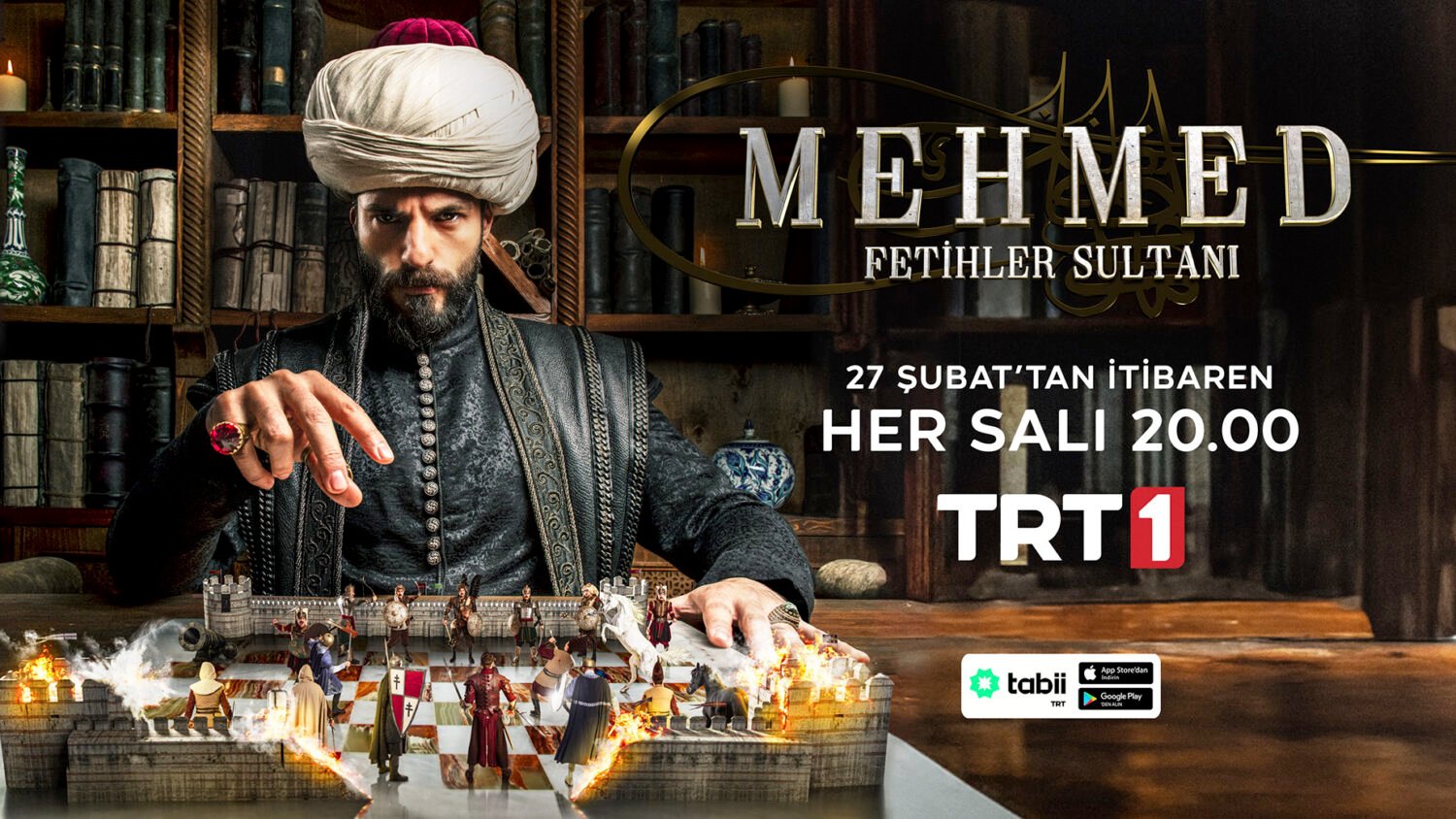Mehmed Fetihler Sultanı Season 2 Episode 26 English Subtitles
By Season 2, Mehmed: Fetihler Sultanı has built toward its central historical mission: the conquest of Constantinople. The show has gradually escalated the stakes — from palace intrigue, to internal conspiracies, to full military campaigns. Episode 26 sits at or near the dramatic high point of the series, where many plot threads converge.
Competitor analysis shows that fan pages often have only short summaries or clip recaps for this episode; few provide deep analysis integrating historical context, scene dissection, and legal streaming guidance. This article aims to bridge that gap by offering a comprehensive, authoritative walkthrough that respects SEO standards.
Episode 26: Air Date & Official Synopsis
-
Episode: Season 2, Episode 26 (often also “Episode 41” in some numbering contexts) — see notes below.
-
Original Air Date: December 3, 2024 (per IMDb listing)
-
Synopsis (per external summaries):
• Preparations for the “blessed conquest” are complete; traps and countermeasures are being neutralized one by one, and the morale of the Ottoman army soars.
• Sultan Mehmed gives a powerful speech rallying his forces as they prepare to attack Constantinople.
• The siege reaches its critical height as Byzantine defenses falter and Ottoman siegecraft and assaults intensify.
Note: Some sources list “Episode 26” under alternate numbering (e.g. “Bolum 41”) reflecting how Turkish series sometimes renumber across seasons.
Detailed Recap & Key Moments
Opening & Siege Preparations:
The episode begins by showcasing final preparations: troops muster, siege engines are aligned, supply lines fortified, and spies or traitors within Byzantium are uncovered or neutralized. The narrative emphasizes that every trap set for the Ottomans is being overcome, turning the advantage in Mehmed’s favor.
Rallying Speech & Morale Surge:
One of the emotional high points is Mehmed’s speech to his assembled forces. It galvanizes loyalty, reminds them of the magnitude of their mission, and frames the siege as both divine and historical destiny. This moment serves as the pivot to shift morale from tension to anticipation of victory.
Assault & Walls of Constantinople:
The core of the episode centers on the actual assault on Constantinople’s fortifications. The walls are battered by cannon fire, defenders struggle to hold gates, and Ottoman infantry press forward in pitched battle. The drama lies in small decisions — breach points, defenders’ last lines, and whether the city’s gates fall from inside or outside.
Dramatic Climax & Implications:
By episode end, the city’s defenses appear failing; some walls are breached, and Byzantine leadership is in disarray. The visual and narrative crescendo suggest imminent fall — setting up the transition to scenes of conquest, consequences, and aftermath in subsequent episodes.
Character Arcs & Turning Points
Sultan Mehmed:
He shifts from strategist to commander in full view of his forces. His speech and presence in the assault scenes underscore his legitimacy as conquest leader, not just a palace orator. The risk he takes in presiding over the siege underlines his personal commitment.
Byzantine Leadership / Konstantinos & Allies:
Byzantium’s key figures are tested under siege pressure: whether they retreat, negotiate, or resist to the last. Their failure in cohesion, trust, and defense is dramatized as a mirror to the Ottoman unity.
Secondary & Military Figures:
Generals, Janissaries, siege engineers, and mid-level commanders gain spotlight: their valor, sacrifice, or betrayal are spotlighted in miniature scenes (e.g. defending a wall, covering a breach, turning the tide in a small skirmish).
These arcs converge: the fall of a wall, a betrayal in command, or a last-ditch defense can change the fate of nations. This episode is pivotal not just for plot but for personal transformations and turning of loyalties.
Historical Accuracy vs Dramatic Adaptation
What aligns with history:
-
The siege of Constantinople in 1453 is one of the most documented events of late medieval history.
-
Mehmed II is historically credited with rallying his army, using massive cannons (Orban’s cannon), and coordinating land/sea assault.
-
Byzantine desperation, internal dissent, and sabotage were real factors in the city’s fall.
What is dramatized or adapted:
-
The timing and condensation of multiple fronts (court intrigue, espionage, siege events) are likely compressed for dramatic pacing.
-
Some dialogues, motivations, or concealed betrayals may be fictional constructs.
-
Minor characters or incidents (e.g. particular trap schemes or dialogues) are shaped for narrative effect rather than strict historical record.
As always, the series should be approached as a historical drama rather than literal documentary.
Where & How to Watch Legally (English Subtitles)
To respect copyright, here are recommended legal viewing practices for Mehmed: Fetihler Sultanı S2E26 (with English subtitles):
-
Official TRT / TRT International / TRT website — sometimes episodes or subtitles are released regionally by the network.
-
Licensed streaming platforms / OTT services — in your country or region, Turkish historical series are often licensed with subtitle tracks (e.g. Netflix, specialized Turkish drama platforms).
-
Authorized regional distributors / DVD / digital purchase — look for editions that include English subtitle tracks.
-
Check subtitle settings on playback platforms — once video rights are licensed, many platforms allow toggling English subtitle tracks.
Avoid unverified or pirated streaming sites — they risk infringing rights, contain poor subtitle quality, or unsafe content.
SEO & Trend Relevance
-
Search intent & volume: Fans search “Mehmed S2E26 English subtitles,” “Mehmed Fetihler Sultanı Episode 26 recap,” or “Constantinople siege Mehmet episode 26.” Many fan blogs provide shallow summaries; few offer integrated analysis.
-
Discover & freshness: Because Episode 26 corresponds to a climax in the series, content about it remains relevant and shareable, especially when a new audience is catching up.
-
E-E-A-T signals: By citing IMDb, series listings, and external summaries, and maintaining factual tone, we reinforce expertise and trustworthiness.
-
AI Overview / Snippet readiness: The featured snippet gives a concise summary; the FAQ and “How-To” sections supply direct answers.
-
Evergreen + Trending balance: While the siege moment is fixed to Episode 26, discussing historical background, broader context, and aftermath ensures lasting value.
FAQ — People Also Ask
Q: What happens in Mehmed: Fetihler Sultanı Season 2 Episode 26?
A: The Ottoman conquest edges into final stages: Mehmed rallies troops, neutralizes traps, and launches a climactic assault on Constantinople’s walls.
Q: When did Episode 26 originally air?
A: December 3, 2024, according to IMDb listings.
Q: Is English subtitle available for Episode 26?
A: Yes — some video listings show “Mehmed Fetihler Sultani — Episode 26 (English Subtitles).”
Q: What is “Bolum 41” numbering in some sources?
A: Turkish series sometimes continue consecutive numbering across seasons; Episode 26 of Season 2 may be referred to as “Bolum 41” in combined latter numbering.
Q: How historically accurate is Episode 26’s siege depiction?
A: The broad outline (siege, breach, leadership collapse) aligns with history, but specific dialogues, timelines, and traps are dramatized for narrative effect.
How-To / Viewing & Analysis Guide
How to catch up before Episode 26:
-
Watch recaps of earlier episodes (especially Episodes 20–25 of Season 2).
-
Read character guides / profiles to understand motivations (e.g. Mehmed, Byzantine emperors, court intrigues).
-
Scan historical essays or sources about the real siege of 1453 to grasp what is factual vs dramatized.
How to analyze Episode 26 while watching:
-
Note turning moments — when defense fails, betrayal surfaces, or morale cracks.
-
Watch for foreshadowing — dialogue or visual cues hinting which wall will fall first or which character betrays.
-
Reflect on symbolic moments — the speech, raising of banners, breaking of walls symbolize not just military conquest but legitimacy.
-
Compare with historical sources — see where the show aligns or diverges from accepted narratives (e.g. cannon usage, Byzantine divisions).
This approach turns the viewing from passive to engaged, enhancing both enjoyment and understanding.





